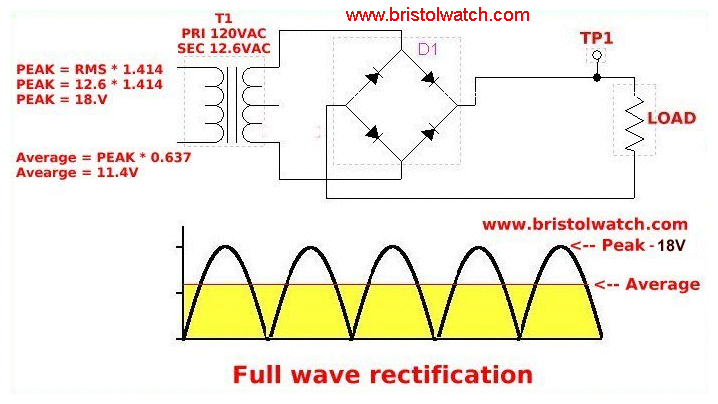Hermanmehta
New Member
After converting 30 0 30 volt 5A Ac to DC dual supply with 4 diodes and two 10000 uf capacitors i get out dc 46 0 46 volts . how to regulate this to 30 0 30 volt dc as this supply is to be used for an Amplifier ?
Follow along with the video below to see how to install our site as a web app on your home screen.
Note: This feature may not be available in some browsers.
Which means the rectified voltage would be 30 x 1.41 = 42.42V, plus a few percent for transformer regulation (increase off load)Transformer is stepdown transformer 250 to 30 0 30 volts

Both positive and negative regulators exist, and low current ones can be boosted with external transistors if needed.Certain regular ic's like LM 338 does does regulate + (anode) 30 v 5A
Does it mean after putting load across it will be 30 v only . Hope this will not spoil my Amp transistorsWhich means the rectified voltage would be 30 x 1.41 = 42.42V, plus a few percent for transformer regulation (increase off load)
A high quality 300W transformer probably has a regulation factor of roughly 7% or so; eg. the voltage with no load will be something like 7% higher than the voltage at full load.
The output voltage will also depend on how well matched the supply voltage is to the transformer primary fvoltage; eg. a 230V transformer fed from 240V (which is perfectly OK) will be a few percent higher again.

Can you help me with circuit for this?Both positive and negative regulators exist, and low current ones can be boosted with external transistors if needed.
That does not change the fact that each regulator sircuit will be dissipating power (heat) in proportion to the current through it * the voltage drop across it.
So roughly 150W of waste heat (and power used) for each of the positive and negative rails.
The heatsinks would need to be massive!
ThanksWhich means the rectified voltage would be 30 x 1.41 = 42.42V, plus a few percent for transformer regulation (increase off load)
A high quality 300W transformer probably has a regulation factor of roughly 7% or so; eg. the voltage with no load will be something like 7% higher than the voltage at full load.
The output voltage will also depend on how well matched the supply voltage is to the transformer primary fvoltage; eg. a 230V transformer fed from 240V (which is perfectly OK) will be a few percent higher again.

ThanksCan you help me with circuit for this?
ThanksCan you help me with circuit for this?
ThanksWhat transformer does the design call for? - using too high a voltage transformer and then trying to regulate the voltage from it makes the overall design a LOT more complicated and unreliable. Did you get the amplifier design from on-line?, if so where?.
Thanks
No! You are not reading the answers or responding to questions!Can you help me with circuit for this?


